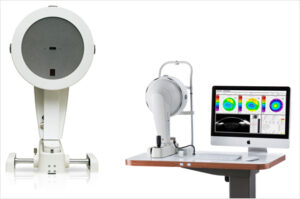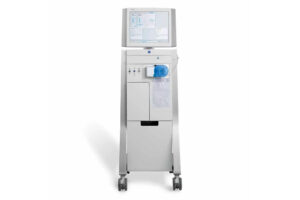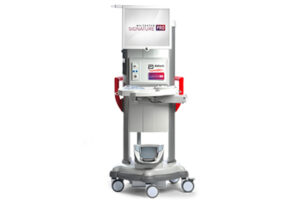Achieve crystal clear vision without glasses.
Most Advanced Lasik Centre In Thane, Dombivli, Kalyan
4,00,000+ Successful Eye Procedures Done And Over 50 Years Of Experience.

Proud To Achieve
Lasik Treatments
Done
Treated Cataract Cases Successfully
Patients
Served
Book An Appointment
Schedule an appointment to talk about Lasik with one of our experienced surgeons.
Pre-Lasik Evaluation
During the consultation, the surgeon will assess your eye health and determine your suitability for Lasik
Assesment Discussion
Discuss your medical history, any existing eye conditions, and your expectations for the procedure
of Experience
Why Lasik At Anil Eye Hospital
Anil Eye Hospital is proud to offer the most advanced Lasik – Femtosecond Lenticule Extraction (FLEx) bladeless refractive surgery in Dombivali. People from Kalyan, Dombivali, and nearby choose us for refractive surgery. The glasses removal surgery at Anil Eye Hospital uses the MEL 80 excimer laser by Carl Zeiss and Femto Second Laser System, providing safe and precise correction. Highly skilled Lasik surgeons perform the surgery.
Experienced Surgeons
Advanced technology
Personalised Care
Positive Feedback
What is Lasik?
Lasik Surgery an acronym for Laser In situ Keratomileusis. It is also called laser vision correction for vison problem. In simple words it is actually reshaping the cornea with the use of a laser. Lasik surgery helps in correcting refractive errors like Myopia, Hyperopia, and
Astigmatism. Painless procedure and quick recovery is making Lasik more popular in India.
This Advanced Technology has helped many people to get rid of glasses and have clear vision.
It is done to treat following refractive errors:
- Myopia
- Astigmatism
- Hypermetropia
Know More About Lasik

Pentacam Analyzer

Advanced surface ablation or PRK

Touchless/ Transepithelial PRK

Femtosecond Lasik
Technologies available at Anil Eye Hospital
Lasik surgery is always safe provided you undergo Pre Lasik work up. To know whether your eyes are fit to go for Lasik a detailed eye evaluation is performed which is a structured examination of Corneal thickness, Curvature of Cornea, Tear films, and Retina.
Frequently Asked Questions
LASIK is a type of laser eye surgery to remove the spectacle number. It stands for Laser Assisted In-situ Keratomileusis. This means to change the shape of the cornea by means of laser to correct your refractive error.
It is done to correct common refractive errors like myopia, astigmatism and hypermetropia.
The most common refractive error causing vision problem is near-sightedness or myopia. This condition leads to blurry vision for far away objects, while near vision is normal.
Astigmatism is another condition where you will be prescribed cylindrical number correction in your glasses. This happens when your cornea or lens is curved more in one direction or axis as compared to the other. Hence, images that you see will be blurred both for far and near. Hypermetropia is also called as far-sightedness where your vision will be blurry for near more and you will often experience headache and eye strain even for far looking objects.
These refractive errors can be corrected by other measures also like eyeglasses or contact lenses. However, you become dependent on glasses for a clear vision and daily use and maintenance of contact lenses becomes difficult. LASIK eye surgery provides you a wonderful option of enjoying the freedom and reducing dependence on glasses or contact lenses.
Laser vision correction options for these refractive errors include laser-assisted in-situ keratomileusis (LASIK), FEMTOSECOND LASIK, ReLEx SMILE Lasik, Transepithelial or touch-less PRK and photorefractive keratectomy (PRK).
It is a procedure that changes the shape of the cornea, which is the anterior most transparent layer of the front of the eye, using an excimer laser.
LASIK: It has two steps in the first step, a mechanical microkeratome (a blade device) or a laser device (bladeless, femtosecond laser) is used to cut a flap in the cornea. A hinge is left at one end of this flap. The flap is folded back revealing the stroma, the middle section of the cornea. Then in the second step, pulses from a computer-controlled excimer laser vaporizes a portion of the stroma which corrects your glasses number and then the flap is replaced.
LASIK is of two types, depending upon the technology used to create the flap:
- Blade LASIK/Conventional LASIK: In this the flap is created using a mechanical microkeratome (a blade device) which creates a thin 90 microns flap. This technique is fast and comfortable but might lead to flap related problems in a few cases.
- Femtosecond LASIK: In this, the flap is created using a laser device (femtosecond laser). This laser is a very advanced technology where ultrafast, low energy laser pulses are used to create microscopic separation leading to a superficial flap. This leads to a better flap morphology and stability. This surgery is more safe, more predictable, more precise, and accurate, painless, and has less risk of flap related problems.
Advanced surface ablation or PRK, which stands for Photorefractive keratectomy: In this procedure only one type of laser is needed that is excimer laser. This has two steps first we remove the front surface of your cornea called as epithelium and then we reshape your cornea using excimer laser. Now, this removal of epithelium can be done manually by a bunt instrument by using alcohol drops or using a motorized brush.
Touchless/ Transepithelial PRK: Now, with the latest technology available at Anil Eye Hospital that is the Schwind platform, this first step of the epithelium removal can be done easily with laser only and it becomes a touch less procedure. So, this helps in early healing within 3 days and reduces pain and discomfort with maximum safety.
Both surgeries have similar visual outcome. PRK surgery is a great option for patients like those with borderline thin corneas or those who are in contact sports or defense services. In terms of corneal strength after surgery, PRK is better. The basic difference is the recovery time which is needed in PRK for healing of the front layer or epithelium. In LASIK, since the flap is placed back, you will get good vision and you are very comfortable from next day only. The advantages of PRK that it is a flapless procedure, so very safe for sports persons, military and has no risk of flap related problems in case of eye trauma. PRK can also be used safely if your corneal thickness is lightly less than normal because it allows us to preserve more corneal tissue than LASIK. Chances of dry eye is also much less in PRK than LASIK surgery because flap is not made here. Your eye doctor, cornea specialist can guide you regarding which procedure will be best for you.
LASIK is the safest ocular surgery much safer than even cataract surgery. It has a success rate of more than 98%. The risk of any complications is 1 in 1000 patients. Here at Anil Eye hospital in last 50 years of experience we have done more than … surgeries and we are prepared to manage any complication if occurs.
Now, with the latest technology available at Anil Eye Hospital that is the Schwind platform, this first step of the epithelium removal can be done easily with laser only and it becomes a touch less procedure. So, this helps in early healing within 3 days and reduces pain and discomfort with maximum safety.
Meet Our Professionals
The experienced LASIK surgeons at Anil Eye Hospital possess a wealth of knowledge and skill, ensuring precise and safe vision correction procedures for their patients.

Dr. Anagha Heroor
Cataract, Glaucoma and Refractive Surgeon, Managing Director - Anil Eye Hospital
Book An Appointment Now
Transform your vision with precision! Anil Eye Hospital welcomes you to experience the future of clarity through Lasik. Secure your Lasik checkup appointment now and unlock a world of clear, hassle-free vision. Book today!
Dombivli Centre
- The Signature, Ganesh Mandir Road Opp. Dedhia Bhavan, Phadke Rd, Pendse Nagar, Dombivli East, Dombivli, Maharashtra 421201
- +9197694 83796
- 09.00 - 21.00
Palava Centre
- Shop No.23, Lodha Shopping Center, Lodha Casa Rio Gold Rd, Dombivli East, Dombivli, Maharashtra 421204
- +919372979369
- 10.00 - 19.30
Kalyan Centre
- Ground Floor Pyra Decks Builduing, Birla College Campus Rd, opp. Birla College, Chikan Ghar, Kalyan, Maharashtra 421301
- +9193213 01326
- 10.00 - 20.00
Thane Centre
- Shop No 6 Ground Floor, SOLITAIRE COSMOS JEWELS, Ghodbunder Rd, Kavesar, Thane West, Thane, Maharashtra 400615
- +918169751850
- 09.00 - 21.00